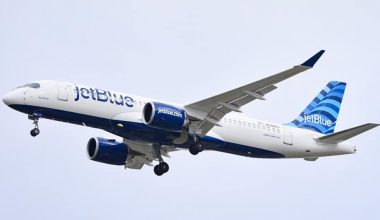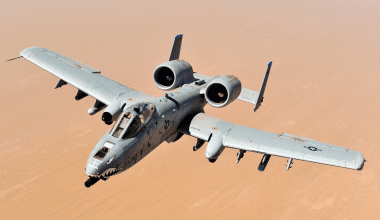There have been significant breakthroughs in mobile communications, where new broadband cellular network technology gradually replaces old ones. New mobile generations continue to appear with leading-edge transmission technology and data speeds. However, 5G interference in aviation has been an emerging issue in the US and other countries. The 5G frequency interference with radar altimeter frequency band is a serious concern in the new age of aircraft operations. The aerospace giants Boeing and Airbus worry about how the new 5G cellular network may interfere with vital technological equipment used by pilots.
The cellular 5G networks, estimated to have more than 1.7 billion subscribers all around the globe by 2025, may pose safety implications for airplane interference. The 5G phone technological services may result in degraded deceleration performance, increased landing distance, and runway excursion due to their operation on a portion of the radio frequency spectrum relatively similar to the plane’s altimeter.

An altimeter is sensitive aircraft equipment that aids a pilot in maintaining the desired altitude during flight and making landings on low visibility. Radio altitude meters are critical in guiding pilots and onboard computers when visibility is almost zero. Radio altimeters also provide highly accurate data for aircraft safety equipment, including navigation instruments, terrain awareness, collision-avoidance systems, etc. The interference of C-band spectrum 5G wireless radiation with altimeter can lead to delays in deploying the spoilers and thrust reversers that slow aircraft down after landing. 5G interference in aviation is a dispute between giant airplane manufacturers and telecom industries over the potential for interference between 5G C-Band and high-tech radio altitude meters. Airlines accuse the implementation of 5G technology near airports will disable aircraft with untested altimeters to perform low-visibility landings.
Also Read: Height call outs on approach and landing
Heightened case over 5G interference in US aviation
5G-the fifth-generation technology standard, has evolved to speed up mobile devices, improve the quality of Internet services and make possible new applications in the internet of things (IoT) and machine-to-machine areas. But the same innovative service has become the topic of the US battle between aviation and telecom industries.
A few days ago, the ten leading carriers of the United States of America, including American Airlines, Alaska Air Group, Atlas Air Worldwide, Delta Air Lines, FedEx Express, Hawaiian Airlines, JetBlue Airways, Southwest Airlines, United Airlines, UPS Airlines, and Airlines for American, had called upon the Biden Administration to halt the development of 5G C-band technology near airports citing the potential for thousands of flight cancellation and disruptions.

They started to ground huge swaths of traveling and shipping public unless clearances were given for major hubs to fly. Warning that the 5G signals could cause radar altimeter interference and consequential loss or incorrect radar altitude information, the airlines demanded immediate intervention to block 5G in places where ATC towers were too close to runways until FAA approved the aircraft models for safe operation without catastrophic disruption. The airlines had expressed fears that launching 5G phone services could lead to aircraft delay, diversion, or cancellation and ripple effects across passengers and cargo operations, the workforce, and the broader economy.
The attempt to roll out amped-up mobile service by two of the biggest phone companies in the US, Verizon, and AT&T, has created a clash between emerging technology and legacy spectrum users. While airlines warn of dire consequences of the 5G rollout, the American wireless industry group CTIA accuses aircraft manufacturers of fear-mongering and fact distortion. AT &T and Verizon have halted the activation of 5T after airlines called on the Biden administration to push back the already-delayed rollout for at least six months.
FAA’s action in the matter regarding 5G intervention in aviation
Federation Aviation Administration (FAA) has been hashing out solutions to reduce the risk of delays and cancellations as altimeter manufacturers evaluate data from wireless enterprises. It recently issued an Airworthiness Directive barring several Boeing aircraft models, such as Boeing 747-8, 747-8F, and 777, which rely on the altimeter, from landing at airports where the risk of interference from 5G wireless signals exists. 3 Boeing models have their autothrottle ground proximity, warning thrust reversers, and traffic collision avoidance system dependent on the altimeter vulnerable to low visibility approaches in areas with 5G deployment areas. However, 90% of the United States commercial plane fleet is approved to land without restriction on low-visibility flying and 5G interference.

FAA-approved aircraft models for most low-visibility approaches in 5G deployment, which have one of the 20 cleared altimeters, include Boeing B717, B737, B747, B757, B767, B777, B787, Airbus A300, A310, A320, A321, A330, A340, A380, MD-10/11, Embraer 120,170, 190 regional jets, CL-600/CRJ regional jets, DHC-8 turboprops, ATR turboprops, etc.
5G interference impacts in radar altimeter
Radar altimeter is a critical component to aircraft operations equipped on commercial and general aviation aircraft to provide critical information in many automated landing and collision avoidance systems. The undetected failure of the only sensor onboard caused by 5G interference can bring catastrophic consequences and dire safety situations. The interference to radar altimeters from 5G signals can affect the following:
- Autoland functions which are vital in the low visibility auto approach
- EICAS/ECAM leading to the deterioration of operational safety levels
- False or missing GPWS alert
- Unreliable instrument indications that can advance to an increased number of hard landings
- Abnormal behavior in the Autoland system, Flight Control laws, Auto-throttle automatic stall protection, and auto speed brake deployment
The potential equipment failures caused by harmful interference to radar altimeters can undermine trust in the avionics system.
5G interference in aviation-Why?
The ‘why’ question may arise among people concerning 5G interference in aviation. The C-band 5G network sits near the frequencies of altimeters in some aircraft. The radio altimeter that operates at a 4.2-4.4 GHz frequency is a bit close to the C-band frequency used for 5G in the US. That’s where the problem may arise. If interference with wireless carrier signals corrupts the altimeter radio signals, it can prevent onboard systems from warning pilots of real threats. Although the chances of interference are small, it’s never 0. The altimeter sends out radio waves to calculate the plane’s altitude from the ground. If the altimeter’s waves don’t bounce back due to disruption posed by 5G wireless technology, then one can’t figure out how close to the ground the plane is, which can lead to the plane landing without the altimeter working. It is a dire situation when a crucial device which is a vital part of automatic landing systems, gives wrong reading or sets off a chain of mistakes by automated systems and by pilots. If proper mitigations are not implemented, the 5G deployment can sabotage flight safety by interfering with sensitive aircraft equipment.
Although modern altimeters may filter out 5G interference in aviation, others can’t. Being the safest mode of transport, aviation can’t put people’s lives at stake, dismissing flight safety issues.
What’s up with C-band 5G network?
The US wireless carriers won the bid for a C-band spectrum of over $81 billion that will supercharge the internet-10 times the speed of 4G networks. 5G operators prefer C-band for its good balance of bandwidth and reliability. The application of this mobile technology pushes economic growth forwards as the nation rebuilds from the pandemic.
This new high-speed cellphone service needs to coexist safely with flight operations in the United States. However, the potentiality of interference to key electronics that aircraft rely on to land safely is minimal.
5G services in other countries apart from the US
Apart from the US, other countries like France, Japan, South Korea, the UK, etc., have deployed 5G but have not raised concerns. There, the radio spectrum frequencies allocated to 5G are far from the radio frequencies on which radio altimeters operate. Besides, different countries use 5G technology in conditions other than those proposed for the US, including titling antennas, lower power levels, etc. To add further, the airspace of the US is more complex than in other countries.
In Europe, the European Union has allocated 3.4-3.8 mid-range 5G frequencies standards which are lower than the spectrum (4.2-4.4GHz) used for altimeters in the United States. South Korea has set the standard of 3.42-3.7GHz 5G mobile communication frequency much lower than what’s permitted in the US, and no such interference issue has been reported.

What next for the US?
As for now, the US has delayed the rollout of the fifth generation of mobile phone technology near some airports amid flight cancellations for six months. It’s important to safely integrate 5G and aviation to reap the benefits of high-speed internet and air transportation. The FAA is working to minimize 5G signals’ impact on radio altimeter signals by discussing and weighing these interference concerns, establishing information sharing between aviation and telecommunication sectors, and more. Either reducing the signal strength, adjusting the frequency range of altimeters or likewise, the safest way forward is yet to be witnessed in the US.






